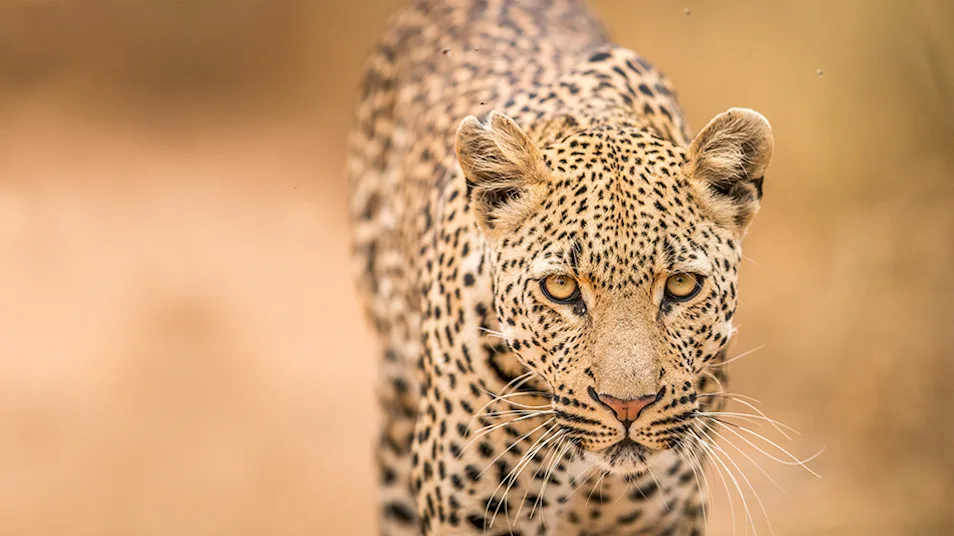
Know Before You Go


Zambia & Zimbabwe Weather & Climate
Winter/Dry Season
During the dry winter months of April through early September, the days are warm, but the nights and early mornings can become very cold (sometimes even near or below freezing)! We will provide cozy comforters to keep you warm during your stay.
Many travelers assume that because they are traveling to Africa, it must always be warm. This is not the case during Zambia and Zimbabwe’s winter, however, particularly in June, July and August. You can expect days to be absolutely beautiful, temperate and sunny, but nights and early mornings will be chilly, possibly near freezing, so we recommend you bring warm layers you can peel off as it warms up through the day. A lightweight down jacket or fleece pullover is ideal. Gloves, a hat, a scarf and warm long pants are also essential at this time of year for early-morning wildlife drives.
Summer/Green Season
Mid- to late September through April is a much warmer period. Late October is generally the hottest time of the year, with temperatures often reaching into the 100s F.
Average Monthly Temperatures & Rainfall:
(In Fahrenheit and inches)
Victoria Falls

Hwange National Park

Mana Pools

Please keep in mind that these are averages, and that weather can be unpredictable. Be sure to check current weather conditions a few days before your departure at: www.weather.com. Remember to check the weather for each location on your itinerary, as conditions may vary.
Zambia Monthly Weather Information and Recommendations
January
January is considered the peak of the green season in Zambia and is often warm, wet and humid. Temperatures at night usually do not dip below the mid-to-lower 60s F, while daytime highs typically reach the upper 70s to low 80s F. Travelers should be prepared for afternoon rain showers with a lightweight, “breathable,” waterproof rain jacket and rain pants. Midday skies are typically clear and sunny—you will want to shed your outer layers and have a short-sleeved shirt, shorts or zip-off pants and a wide-brimmed hat for protection from the sun.
February
Again dominated by warm, wet and humid weather, February is generally characterized by the same temperatures as January. We recommend being prepared with a lightweight, “breathable,” waterproof rain jacket and rain pants as well as a short-sleeved shirt, shorts or zip-off pants and a wide-brimmed hat for protection from the sun.
March
The green season continues in March with rainfall decreasing throughout the month, though afternoon thunderstorms are still possible, and travelers should be prepared with raingear. Temperatures may reach the upper 80s F during the day and will generally drop to the mid-60s F at night. In order to be comfortable during the middle of the day, we recommend a short-sleeved shirt, shorts or zip-off pants and a wide-brimmed hat for protection from the sun.
April
April is characterized by virtually constant daytime highs of approximately 79°F throughout the month. By April most of the rain has abated, leaving a landscape that’s still green but starting to dry out. The key wildlife areas open to travelers once again. Nighttime temperatures start to drop, especially in higher and more southerly locations. Average lows tend to hover around 60°F. We recommend being prepared for afternoon rain showers, although you may not experience them every day. Layers, including a short-sleeved shirt and shorts or zip-off pants, are good for warmer periods during midday.
May
In May, Zambia experiences gradually falling daily high temperatures and decreasing precipitation. Days are generally dry, sunny and cool to warm with highs in the mid- to upper 70s F. Nighttime temperatures drop sharply into the 50s and sometimes even the 40s F, with cold spells likely. Travelers will want to be prepared for the cold nights and early mornings with warm sleepwear, a windproof outer jacket, a fleece or heavy sweater, a warm hat, gloves and a scarf. As temperatures increase during the day, you will want to be able to shed these layers; be prepared with lightweight clothing including a short-sleeved shirt and shorts or zip-off pants.
June
During June daily high temperatures continue to fall, with highs decreasing from approximately 76°F to approximately 72°F over the course of the month. It is typically the coolest month of the year, with an average low temperature of approximately 50°F. June is also the beginning of the dry season so afternoon thunderstorms are less common. Travelers should be prepared for cool nighttime and early morning temperatures with a windproof jacket, a fleece and long pants, as well as a warm hat, gloves and a scarf. Short-sleeved shirts and shorts or zip-off pants are recommended for the warmer midday temperatures.
July
July is the middle of Zambia’s winter season, with conditions and temperatures very similar to those in June. Average highs remain around 72°F and lows tend to hover around 50°F. Layering is recommended, with a fleece, windproof jacket, warm hat, gloves and a scarf for early morning activities, and lightweight clothing by the middle of the day. Zip-off pants are a versatile option.
August
Cool and dry conditions continue to prevail in August, although temperatures start to increase slightly. Highs are usually in the mid- to upper 70s F while lows are in the mid-50s F. Warm clothing is recommended for nights and early mornings, and lightweight clothing including a short-sleeved shirt and shorts or zip-off pants are recommended for midday activities. Sun protection is also important—we recommend a wide-brimmed hat and plenty of sunscreen.
September
September is characterized by gradually rising temperatures with daily highs increasing from 84°F to 88°F over the course of the month. Daily lows hover in the mid-50s F. Be prepared for hot weather by midday. We recommend a short-sleeved shirt, shorts or zip-off pants and plenty of sun protection. It is also dry and often dusty at this time of year, so a bandanna to protect your mouth and nose is a good idea.
October
Temperatures continue to climb in October, which is the hottest month of the year. The lower-lying rift valleys—Lower Zambezi and Luangwa Valley—can get especially hot, although you’ll have some superb wildlife viewing since the animals concentrate around the limited water sources. Be prepared as you would for a hot summer day, with lightweight clothing including a short-sleeved shirt, shorts or zip-off pants, plenty of sun protection and a bandanna to cover your mouth and nose if conditions are dusty.
November
November in Zambia is variable; it can be hot and dry like October, or it can see the season’s first downpours. November is often a very interesting month in terms of weather, as you can see both patterns on successive days. This means travelers should be prepared for all conditions. We recommend a lightweight, “breathable,” waterproof rain jacket and rain pants as well as a short-sleeved shirt, shorts or zip-off pants, plus a wide-brimmed hat for protection from the sun.
December
December is the start of the rainy season, also known as the “emerald season” in Zambia. Nighttime temperatures usually do not drop below the mid-to-lower 60s F, while daytime highs typically reach the upper 70s and low 80s. A lightweight, “breathable,” waterproof rain jacket and rain pants are recommended for protection from afternoon rain showers, and a short-sleeved shirt, shorts or zip-off pants plus a wide-brimmed hat for sun protection are recommended during the middle of the day.
Zimbabwe Monthly Weather Information and Recommendations
January
January is the green season in Zimbabwe, as it is throughout southern Africa. Days are hot and generally sunny in the morning with possible afternoon thunderstorms. Highs may reach the low 90s F, and lows are typically in the mid-60s. Travelers should be prepared for afternoon rain showers with a lightweight, “breathable,” waterproof rain jacket and rain pants. At midday skies are often clear and sunny—you’ll want to shed your outer layers and have a short-sleeved shirt, shorts or zip-off pants and a wide-brimmed hat for protection from the sun.
February
February is still the green season. Typical weather patterns continue to evolve from hot, sunny mornings and early afternoons to late-afternoon rain showers that are usually brief. February temperatures do not tend to be quite as hot as in January—highs will generally be in the mid- to upper 80s F while evenings tend to be mild with lows remaining in the mid-60s. Layers are recommended with a lightweight, “breathable,” waterproof rain jacket and rain pants as well as lightweight clothing to wear when it is warm and sunny (T-shirt, shorts or zip-off pants and plenty of sun protection).
March
The green season comes to a close toward the end of March, so clothing recommendations remain the same as for January and February through most of the month. March highs are in the mid- to upper 80s F and lows are in the mid-60s. Layering is the key to comfort, with a lightweight, “breathable,” waterproof rain jacket and rain pants for afternoon thunderstorms, and a T-shirt, shorts or zip-off pants and plenty of sun protection for hot and sunny midday conditions.
April
By April most of the rains are gone and the landscape begins to dry out. Especially in more southerly and higher locations, nighttime temperatures start to drop. Highs are likely to be in the mid-80s F with lows in the upper 50s to low 60s. The need for raingear is less likely though it is still recommended, and a sweater or fleece jacket will be appreciated at night and in the early morning.
May
May is the beginning of Zimbabwe’s winter season, with dry, sunny days and temperatures continuing to cool down. Highs will be in the upper 70s to low 80s F and lows will be in the low to mid-50s. Temperatures in Hwange National Park drop dramatically after dark, and warm clothing is recommended for the cool evenings and early mornings.
June
June temperatures can be surprisingly cold. While days will typically be in the upper 70s F, nights and early mornings will be chilly, often in the low 40s F, but can even drop below freezing, particularly in Hwange National Park. We recommend warm layers that you can peel off as it warms up throughout the day. A warm jacket or fleece and warm long pants are essential, as are gloves, a hat and a scarf. Lightweight clothing may be all you need by the middle of the day. Zip-off pants are a versatile option.
July
July is mid-winter in Zimbabwe. Many safari-goers think that because they are traveling in Africa, it must always be warm. This is not the case in Southern Africa in the winter months. Temperatures at night and in the early mornings are likely to dip down into the low 40s and frequently, even into the upper 30s F. Again, it is possible for temperatures to drop below freezing, especially in Hwange National Park. We recommend clothing similar to what you would wear on a mild winter day throughout most of the United States. A warm jacket or fleece and warm long pants are essential, as are gloves, a hat and a scarf. Lightweight clothing may be all you need by the middle of the day. Zip-off pants are a versatile option.
August
August is one of Zimbabwe’s driest months. It is still winter, so expect temperatures to remain cold at night and in the early mornings (lows will typically be in the mid-40s F, but can drop below freezing, particularly in Hwange National Park). Average daytime highs will be in the mid-80s F, so lightweight clothing will serve you well in the middle of the day. Once the sun sets and temperatures drop markedly, dress in warm layers including a jacket or fleece and warm long pants, as well as a warm hat, gloves and a scarf.
September
By September, winter is over and temperatures can climb into the low 90s F. Travelers should be prepared for hot, sunny days. We recommend a short-sleeved shirt, shorts or zip-off pants and plenty of sun protection including sunscreen and a wide-brimmed hat. A lightweight long-sleeved shirt will protect your arms from the sun. It is dry at this time of year, and a bandanna to protect your mouth and nose from the dust can come in handy. Average lows are in the upper 50s, so warm clothing is not as essential as during the winter months, although you may want a light jacket or sweater in the evenings and early mornings.
October
October is typically the hottest month in Zimbabwe and throughout Southern Africa—be prepared for sunny days and hot temperatures. October remains very dry, so we highly recommend a bandanna to protect your mouth and nose from the dust. Temperatures will range from the mid-60s F on the low end to the mid-90s F on the upper end. Be prepared for the hot weather with a short-sleeved shirt, shorts or zip-off pants and plenty of sun protection, including sunscreen and a wide-brimmed hat. A lightweight, long-sleeved shirt will protect your arms from the sun.
November
In November, the first rains commence as migrant birds arrive in the area and the bush becomes green. November is the first month of the summer season, and it is generally still very hot during this time. Highs are slightly cooler than during the previous few months—typically in the upper 80s F. Lows are usually in the mid-60s F. Be prepared for hot weather with a short-sleeved shirt, shorts or zip-off pants and plenty of sun protection and a wide-brimmed hat. It is also important to be prepared for short afternoon thunderstorms with a lightweight, “breathable,” waterproof rain jacket and rain pants.
December
Summer continues in December with increased chances of afternoon rain showers. Temperatures are much the same as they are in November, with highs in the upper 80s F and lows in the mid-60s F. Be prepared for hot weather with a short-sleeved shirt, shorts or zip-off pants and plenty of sun protection and a wide-brimmed hat. Short afternoon thunderstorms are common, so a lightweight, “breathable,” waterproof rain jacket and rain pants are recommended.
Header Credit: Emily Goodheart
































